Master key of Malvaceae
A Deep/ Unconditional/ Devotional love Bond/attachment/connection.
Separation/detachment/Disconnection brings deep unconditional/devotional pain.
Reaction: is to write/speak/tell about that unconditional/devotional love. Becomes storyteller, writer, activist and devote his/her life in that.
Example:
- Rumi and His master Shams
- Lovers like Laila/Majnu, Heer/Ranja/Meerabai/Krishna
- Mother and child
- Between family members/community/tribe/country members.
Chocolate
 Source: Belgian dark chocolate
Source: Belgian dark chocolate
Master Key: Unconditional love bond/attachment/connection of a young lover. Acute love. Short lasting intense love.
Organ Affinity:
Trinity of symptoms:
Miasm: Acute
Video of Chocolate
DD Chocolate
Materia Medica Chocolate
Repertory Chocolate
Provings Chocolate
Chemical Ingredients of Chocolate
New Research Chocolate
Wikipedia Chocolate
Medical Use of Chocolate
Alternative Classification of Chocolate
Mythology Chocolate
Alternative Medicine Use of Chocolate
Tilia Europaea
 Source: Linden tree, Botanical Name: Tilia vulgaris Synonyms: Tilia intermedia, Tilia europaea English: Common Linden, Common Lime Tree Part used: Blossom (young flowers)
Source: Linden tree, Botanical Name: Tilia vulgaris Synonyms: Tilia intermedia, Tilia europaea English: Common Linden, Common Lime Tree Part used: Blossom (young flowers)
Master Key: Unconditional love/bond/attachment/connection with Lover (Ideal woman)
Organ Affinity: Female Reproductive System, Disease of the antrum.
Trinity of symptoms: 1) Profuse sweat, without relief, THE MORE HE SWEATS THE GREATER THE PAIN
2) Bed feels too hard
3) Dread of society.
Miasm: Sycosis
Video of Tilia Europaea
DD Tilia Europaea
Materia Medica Tilia Europaea
THE MORE HE SWEATS THE GREATER THE PAIN. (Phatak)
Love-sick. Dread of society.
Love sick; all his thoughts centered upon an ideal woman; in this revery he was possessed by a sweet melancholy, which it was impossible to describe; every earthly sense seemed far away. (Allen)
Repertory Tilia Europaea
Provings Tilia Europaea
Chemical Ingredients of Tilia Europaea
New Research Tilia Europaea
Wikipedia Tilia Europaea
Medical Use of Tilia Europaea
Alternative Classification of Tilia Europaea
Mythology Tilia Europaea
The lime has long been regarded as an essentially female tree.
Loving couples sat under the blossoming lime on hot summer nights and villagers enjoyed its shade while drinking, joking and making music. (Vermeulen)
There is a lime tree at the well; I dreamed many a sweet dream in its shadow; in its bark, I inscribed many a tender word; I shared my sorrows and joys with it," wrote Franz Schubert, the romantic piano composer.
The names of three great Swedish scholars are linked to this lime tree including Linnaeus, Lindelius and Tiliander. Whenever a well-known member of these families died, a large branch of the lime also died. At the start of this century only the dead trunk was left as a reminder of the dead scholars.
In old Slavic mythology, the linden (lipa, as called in all Slavic languages) was considered a sacred tree.
The heart-shaped lime tree leaf is associated with the heart and all its symbolism, which explains its association with the principles of Love, Fidelity and Justice.
The dance lime tree is a “Tree of Love”. ...
Alternative Medicine Use of Tilia Europaea
Theobroma cacao (Cocoa bean)
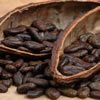 Source: Theobroma cacao, also called the cacao tree and the cocoa tree, is a small (4–8 m (13–26 ft) tall) evergreen tree in the family Malvaceae, native to the deep tropical regions of Mesoamerica. Its seeds, cocoa beans, are used to make chocolate liquor, cocoa solids, cocoa butter and chocolate.
Source: Theobroma cacao, also called the cacao tree and the cocoa tree, is a small (4–8 m (13–26 ft) tall) evergreen tree in the family Malvaceae, native to the deep tropical regions of Mesoamerica. Its seeds, cocoa beans, are used to make chocolate liquor, cocoa solids, cocoa butter and chocolate.
Master Key: Devotional kind of love/bond/ attachment. (For eg Indian devotee Meerabai her love for the Lord Krishna led to effortless devotional songs)
Organ Affinity:
Trinity of symptoms:
Miasm: Cancer
Cases of Theobroma cacao
Video of Theobroma cacao
DD Theobroma cacao
Difference between cacao cocoa and chocolate
Cacao seed goes through Fermentation, Drying,. Roasting, Crushing, Grinding.
To make cocoa powder, the liquor — which is roughly half fat in the form of cocoa butter — is pressed to remove most of the fat.
To make chocolate, the liquor is often mixed with other ingredients, including vanilla, sugar, more cocoa butter and milk (4).
The proving of Chocolate was done with 'best quality Belgian dark chocolate’. Research has shown a connection between chocolate and enzymes produced when people fall in love.
Materia Medica Theobroma cacao
Murphy
Disappointed love
Repertory Theobroma cacao
Provings Theobroma cacao
Chemical Ingredients of Theobroma cacao
New Research Theobroma cacao
Wikipedia Theobroma cacao
Medical Use of Theobroma cacao
Alternative Classification of Theobroma cacao
Mythology Theobroma cacao
Theobroma is Greek for "Food of the Gods". Mayan Indian legend has it that the cocoa tree was a gift from the gods.
Mayas Mythology of Cacao
The word cacao originated from the Maya word Ka'kau', as well as the Maya words Chocol'ha and the verb chokola'j "to drink chocolate together".
The flower god (K'uh/Ahaw? Nik) sits between two cacao plants.
They developed numerous preparations of cocoa, and they topped it all off with a creation myth concerning the central Mayan god, known as Heart Of Sky.
In Mayan creation mythology, humans are partially composed of cacao! In the ancient Mayan text, four young gods bleed onto cacao pods, mingling the cacao and their blood.
If cacao was “a sacred offering to the gods combined with personal blood-letting through the piercing or cutting of their own flesh” to the Mayans, this page is an excellent reflection of that close bond.
The sacrifice would be rejuvenated and joyful after drinking this mixture of blood and chocolate, and dance to his death.
In Maya times, drinking chocolate was one of the privileges of high-status individuals (the royal house, nobles, priests, highest government officials, military officers, great warriors, shamans, artists, merchants) as it was considered Food of the Gods.
Alternative Medicine Use of Theobroma cacao
Gossypium Herbaceum (Cotton)
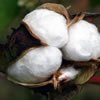 Source: Gossypium herbaceum, commonly known as Levant cotton, is a species of cotton native to the semi-arid regions of sub-Saharan Africa and Arabia where it still grows in the wild as a perennial shrub.[clarification needed] It is a sister-species[clarification needed] of Gossypium arboreum.
Source: Gossypium herbaceum, commonly known as Levant cotton, is a species of cotton native to the semi-arid regions of sub-Saharan Africa and Arabia where it still grows in the wild as a perennial shrub.[clarification needed] It is a sister-species[clarification needed] of Gossypium arboreum.
Master Key: An Unconditional/Devotional love Bond/attachment/connection Between Mother and child, Between group, community, different races.
Organ Affinity: Female Reproductive System
Trinity of symptoms: 1) Wandering pains/desire to travel.
2) Eating amel mental and physical symptoms.
3) Hormonal imbalance.
Miasm: Ringworm
Cases of Gossypium Herbaceum
Video of Gossypium Herbaceum
DD Gossypium Herbaceum
Materia Medica Gossypium Herbaceum
Boericke
A powerful emmenagogue (which stimulates menses flow), used in physiological doses.
Gossypium will relieve tardy menses, especially with sensation that the flow is about to start and yet does not do so.
Repertory Gossypium Herbaceum
Provings Gossypium Herbaceum
Chemical Ingredients of Gossypium Herbaceum
New Research Gossypium Herbaceum
Wikipedia Gossypium Herbaceum
Medical Use of Gossypium Herbaceum
The link between Malvaceae and oxytocin is exemplified by American herbalist Michael Moore's introduction to the herbal use of Cotton Root.
"The sole activity of Cotton Root bark seems to stimulate those tissues that respond to the pituitary hormone oxytocin.”
Cotton root bark has the ability to interrupt pregnancy due to its anti-progesterone and anti-corpus luteum effect.
These effects cause the lining of the uterus to be non-supportive to a fertilized egg. This verifies Cotton's ability to interfere with implantation and cause abortion.
While it was used to make childbirth easier, cotton root bark was also taken as an abortifacient (to induce miscarriages)
Which is responsible for bonding between partners, mother and child, human and animals, group bonding, between different races.
Alternative Classification of Gossypium Herbaceum
Mythology Gossypium Herbaceum
Khadi in India
The handspun cotton, known as Khadi is of special significance to Indians. Gandhi elevated the fragile thread of cotton to a symbol of strength and self-sufficiency. During the Indian Independence struggle, the spinning wheel, the handloom and cotton became symbols of freedom, providing employment for millions. The symbolism of wearing cloth made by human hands has continued till this day. Cotton gloves are the symbol of trust in freemasonry.
Alternative Medicine Use of Gossypium Herbaceum
Hibiscus Rosa-sinensis
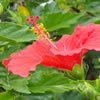 Source: Hibiscus rosa-sinensis, known colloquially as Chinese hibiscus, China rose, Hawaiian hibiscus, rose mallow and shoeblackplant, is a species of tropical hibiscus
Source: Hibiscus rosa-sinensis, known colloquially as Chinese hibiscus, China rose, Hawaiian hibiscus, rose mallow and shoeblackplant, is a species of tropical hibiscus
Master Key: Unconditional/Devotional love Bond/attachment/connection with ones Feminine/artistic part/right brain part.
Reaction: Become violent/indifference to feminine side/artistic side.
Organ Affinity: Cardiovascular system (For Blood pressure related complaints)
Trinity of symptoms:
Miasm: Leprous
Cases of Hibiscus Rosa-sinensis
Video of Hibiscus Rosa-sinensis
DD Hibiscus Rosa-sinensis
Materia Medica Hibiscus Rosa-sinensis
Repertory Hibiscus Rosa-sinensis
Provings Hibiscus Rosa-sinensis
Chemical Ingredients of Hibiscus Rosa-sinensis
New Research Hibiscus Rosa-sinensis
Wikipedia Hibiscus Rosa-sinensis
Medical Use of Hibiscus Rosa-sinensis
Alternative Classification of Hibiscus Rosa-sinensis
Mythology Hibiscus Rosa-sinensis
Kali is form of Devi, the supreme mother in Hinduism. Devi was willed into existence by the gods, who each gave a piece of themselves to create her, and when she was fully formed, they—the gods—worshipped her in part because she was a perfect embodiment of all of them.
During a break in the battle, Mahishasura declared himself Ruler of the Universe and began to march on Heaven to claim his prize with an army of demons.
Kali met the army of Mahishasura and slaughtered them. She met Mahishasura himself and killed him after a fierce battle.
So great was her fury that though the fight had ended, she continued to rage through the battlefield.
The gods realized they needed to stop her, but they were all were afraid. Shiva, the god of time and change (Kali’s male counterpart), went down to the battlefield, and laid down.
Kali continued to dance until she looked down and realized she was stepping on Shiva. She was embarrassed because in that form, Shiva was her husband.
She withdrew her rage and to demonstrate her shame, stuck out her tongue, which is how she is often depicted.
The red hibiscus is representative of Kali's tongue.. The hibiscus is symbolic of the blood lust that possesses her.
Alternative Medicine Use of Hibiscus Rosa-sinensis
Flower Essence…
Patterns of imbalance: Inability to connect with one's female sexuality; lack of warmth and vitality, often due to prior exploitation or abuse.
This remedy is sometimes also indicated for men who need to develop a stronger relationship to feminine warmth and positive sexuality.
Malva silvestris (Wild Malve / Common Mallow)
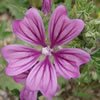 Source: Malva sylvestris is a species of the mallow genus Malva in the family of Malvaceae and is considered to be the type species for the genus. Known as common mallow to English-speaking Europeans, it acquired the common names of cheeses, high mallow and tall mallow (mauve des bois by the French) as it migrated from its native home in Western Europe, North Africa, and Asia through the English-speaking world.
Source: Malva sylvestris is a species of the mallow genus Malva in the family of Malvaceae and is considered to be the type species for the genus. Known as common mallow to English-speaking Europeans, it acquired the common names of cheeses, high mallow and tall mallow (mauve des bois by the French) as it migrated from its native home in Western Europe, North Africa, and Asia through the English-speaking world.
Master Key: Disgusted with love Bond/attachment/connection and what was supposed to be sacred/spiritual/deep/unconditional bond has turned into ordinary.
Reaction: Deep guilt and want to clean oneself with this feeling.
Eg: Master and disciple/student and teacher and now there is love/lust to it and feel dirty about it.
Organ Affinity: Female Reproductive System
Trinity of symptoms: 1) URTI, 2) irritation of the bowels, kidneys and bladder, and in dysentery
Miasm: Leprous
Cases of Malva silvestris
Video of Malva silvestris
DD Malva silvestris
Materia Medica Malva silvestris
Repertory Malva silvestris
Provings Malva silvestris
Chemical Ingredients of Malva silvestris
By the 17th century CE, okra had reached the New World via the slave trade in Africa and by the 19th century, it had spread to China.
Okra is also a significant source of vitamin C and contains many other micronutrients such as calcium, phosphorus, iron, beta-carotene, and B vitamins.
Okra contains a moderate amount of oxalate, a compound that both is created by the human body and is present in plants. Because oxalate is excreted through urine and can calcify in the kidneys, high levels of oxalate intake along with genetic predisposition may lead to the development of kidney stones.
New Research Malva silvestris
Laboratory research suggests that okra and its extracts can be useful in the treatment of a variety of disease states. A recent in vitro study indicated that Abelmoschus esculentus lectin (AEL), a protein extracted from okra, binds carbohydrates on the surface of cancer cells, thus causing apoptosis (programmed cell death) and significantly and selectively inhibiting breast cancer cell proliferation.
Modern research suggests that okra’s effectiveness in the treatment of gastrointestinal complaints can be attributed to the presence of rhamnogalacturonan polysaccharides, which disrupt the adhesion of Helicobacter pylori bacteria to stomach tissue; these bacteria are associated with stomach ulcers.
The polysaccharide compounds bind non-specifically to different strains of H. pylori, inhibiting the binding of the pathogens to gastric cells. The rhamnogalacturonans appear to interact with H. pylori’s surface proteins, potentially providing a preventative treatment approach. Okra’s mucilage could also inhibit the recurrence of H. pylori infections by preventing re-colonization of the stomach following antibiotic eradication therapy.
Wikipedia Malva silvestris
Medical Use of Malva silvestris
Alternative Classification of Malva silvestris
Mythology Malva silvestris
Alternative Medicine Use of Malva silvestris
Flower essence
Think with your heart. Separation of the feeling and thinking faculties may impede coherent communication. Express yourself with lucidity from the heart.
Mallow flower essence is for those of us who need to step back or break free from activities that are causing us to stress and burn out. Use this flower essence when our enthusiasm runs away with itself and we are in danger of becoming exhausted.
SELF-HATRED, SENSE OF UNCLEANLINESS
"cleansing remedy' and is indicated whenever there is a feeling of having been soiled, for example by disease, pollution touching a dirty object or dealing with infected material.
Abroma Augusta (Devil's cotton)
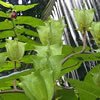 Source:
Source:
Master Key:
Organ Affinity: Female Reproductive System and Diabetes pathology
Trinity of symptoms: 1) Dryness
2) Thirst large quantity of water/Large appetite
3) Touch agg (from nature)
Miasm:
Cases of Abroma Augusta
Video of Abroma Augusta
DD Abroma Augusta
Materia Medica Abroma Augusta
Repertory Abroma Augusta
Provings Abroma Augusta
Chemical Ingredients of Abroma Augusta
New Research Abroma Augusta
Wikipedia Abroma Augusta
Medical Use of Abroma Augusta
Alternative Classification of Abroma Augusta
Mythology Abroma Augusta
The name 'abroma' is strikingly similar to 'theobroma'. The latter name comes from 'broma', food and 'Theo', god, indicating food of the gods. Abroma has the prefix 'a' meaning 'without', implying that Abroma cannot be used as food.
The bark yields a very strong jute-like fibre, which is used for making rope, twine, fish lines and pouches.
Alternative Medicine Use of Abroma Augusta
Abelmoschus esculentus (Okra)
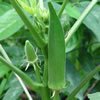 Source: Okra, Abelmoschus esculentus, known in many English-speaking countries as ladies' fingers or ochro
Source: Okra, Abelmoschus esculentus, known in many English-speaking countries as ladies' fingers or ochro
Master Key:
Organ Affinity: Gastrovascular system, Cancer pathologies, Helicobacter pylori (Acc to Modern medicine research)
Trinity of symptoms: 1) Diabetes: it is to the actions of myricetin that the reported blood-sugar lowering ability of the plant is attributed.
2) The seeds are burned as incense and used in making incense sticks called agarbattis. Ambrette oil possesses an odour similar to that of animal musk.
3) Fear of poisonous animals of all kinds, Insects/spiders
Miasm: Typhoid
Cases of Abelmoschus esculentus
Video of Abelmoschus esculentus
DD Abelmoschus esculentus
Materia Medica Abelmoschus esculentus
Repertory Abelmoschus esculentus
Provings Abelmoschus esculentus
Chemical Ingredients of Abelmoschus esculentus
New Research Abelmoschus esculentus
Wikipedia Abelmoschus esculentus
Medical Use of Abelmoschus esculentus
Alternative Classification of Abelmoschus esculentus
Mythology Abelmoschus esculentus
Alternative Medicine Use of Abelmoschus esculentus
Abelmoschus moschatus (Musk okra/Wild okra)
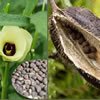 Source: Abelmosk, ambrette, annual hibiscus, Bamia Moschata, Galu Gasturi, muskdana, musk mallow, musk okra, ornamental okra, rose mallow, tropical jewel hibiscus, Yorka okra
Source: Abelmosk, ambrette, annual hibiscus, Bamia Moschata, Galu Gasturi, muskdana, musk mallow, musk okra, ornamental okra, rose mallow, tropical jewel hibiscus, Yorka okra
Master Key:
Organ Affinity:
Trinity of symptoms:
Miasm:
Cases of Abelmoschus moschatus
Video of Abelmoschus moschatus
DD Abelmoschus moschatus
Materia Medica Abelmoschus moschatus
Repertory Abelmoschus moschatus
Provings Abelmoschus moschatus
Chemical Ingredients of Abelmoschus moschatus
New Research Abelmoschus moschatus
Wikipedia Abelmoschus moschatus
Medical Use of Abelmoschus moschatus
Alternative Classification of Abelmoschus moschatus
Mythology Abelmoschus moschatus
Alternative Medicine Use of Abelmoschus moschatus
Kola Nut (Sterculia Nitida)
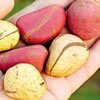 Source: The kola nut is the fruit of the kola tree, a genus (Cola) of trees that are native to the tropical rainforests of Africa. The caffeine-containing fruit of the tree is used as a flavoring ingredient in beverages, and is the origin of the term "cola".
Source: The kola nut is the fruit of the kola tree, a genus (Cola) of trees that are native to the tropical rainforests of Africa. The caffeine-containing fruit of the tree is used as a flavoring ingredient in beverages, and is the origin of the term "cola".
Master Key: An Unconditional/Devotional love Bond/attachment/connection between family/community/tribe.
Due to other member/family/tribe/community that Unconditional/Devotional bond/attachment/connection is broken/lost/losing.
Reaction:
Bitter feeling in the heart and want to come back to original Unconditional/Devotional love Bond/attachment/connection between family/community/tribe.
Organ Affinity:
Trinity of symptoms: 1) Craving for caffeine and theobromine (Cocoa/chocolates). Craving for an aerated energy drink
2) It promotes appetite and digestion and lessens the craving for liquor.
3) Gives power to endure prolonged physical exertion without taking food and without feeling fatigued. Increase strength in weak heart/asthma.
Miasm:
Cases of Kola Nut
Video of Kola Nut
DD Kola Nut
Materia Medica Kola Nut
Repertory Kola Nut
Provings Kola Nut
Chemical Ingredients of Kola Nut
The kola nut is a caffeine-containing nut of evergreen trees of the genus Cola, primarily of the species Cola acuminata and Cola nitida. Cola acuminata, an evergreen tree about 20 metres in height, has long, ovoid leaves pointed at both the ends with a leathery texture. The trees have yellow flowers with purple spots, and star-shaped fruit. Inside the fruit, about a dozen round or square seeds develop in a white seed-shell. The nut’s aroma is sweet and rose-like. The first taste is bitter, but it sweetens upon chewing. The nut can be boiled to extract the caffeine.
Kola nuts contain about 2–4% caffeine and theobromine, as well as tannins, alkaloids, saponins, and flavonoids.
Preliminary studies of phytochemicals in kola nut indicate the presence of various constituents:
caffeine (2–3.5%)
theobromine (1.0–2.5%)
theophylline
polyphenols
phlobaphens (kola red)
epicatechin
D-catechin
tannic acid
sugar
cellulose
water
New Research Kola Nut
Wikipedia Kola Nut
Medical Use of Kola Nut
Alternative Classification of Kola Nut
Mythology Kola Nut
Alternative Medicine Use of Kola Nut
Althaea officinalis
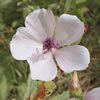 Source: Althaea officinalis, or marsh-mallow, is a perennial species indigenous to Europe, Western Asia, and North Africa, which is used in herbalism and as an ornamental plant. A confection made from the root since ancient Egyptian times evolved into today's marshmallow treat, but most modern marshmallow treats no longer contain any marsh-mallow root.
Source: Althaea officinalis, or marsh-mallow, is a perennial species indigenous to Europe, Western Asia, and North Africa, which is used in herbalism and as an ornamental plant. A confection made from the root since ancient Egyptian times evolved into today's marshmallow treat, but most modern marshmallow treats no longer contain any marsh-mallow root.
Master Key:
Organ Affinity: Throat affections (especially tonsillitis)
Trinity of symptoms: 1) Irritable bladder, throat, and bronchi
2) Excellent gargle for inflammation of the mucous membranes of mouth and throat.
3) In damp weather (nature)
Miasm:
Cases of Althaea officinalis
Video of Althaea officinalis
DD Althaea officinalis
Materia Medica Althaea officinalis
Repertory Althaea officinalis
Provings Althaea officinalis
Chemical Ingredients of Althaea officinalis
New Research Althaea officinalis
Wikipedia Althaea officinalis
Medical Use of Althaea officinalis
Alternative Classification of Althaea officinalis
Mythology Althaea officinalis
Alternative Medicine Use of Althaea officinalis
Sida alnifolia
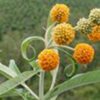 Source: Sida is a genus of flowering plants in the mallow family, Malvaceae. They are distributed in tropical and subtropical regions worldwide, especially in the Americas. Plants of the genus may be known generally as fanpetals or sidas.
Source: Sida is a genus of flowering plants in the mallow family, Malvaceae. They are distributed in tropical and subtropical regions worldwide, especially in the Americas. Plants of the genus may be known generally as fanpetals or sidas.
Master Key:
Organ Affinity:
Trinity of symptoms: 1) Emaciated debilitated individuals.
2) It produces strength and imparts beauty to the body.
3) It is used as a tonic to increase vigour. It is an aphrodisiac and promotes the sexual drive in sexually debilitated individuals. (proving by Jithesh)
Miasm:
Cases of Sida alnifolia
Video of Sida alnifolia
DD Sida alnifolia
Materia Medica Sida alnifolia
Repertory Sida alnifolia
Provings Sida alnifolia
Chemical Ingredients of Sida alnifolia
New Research Sida alnifolia
Wikipedia Sida alnifolia
Medical Use of Sida alnifolia
Alternative Classification of Sida alnifolia
Mythology Sida alnifolia
Alternative Medicine Use of Sida alnifolia
Urena Lobata
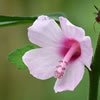 Source: Urena lobata, commonly known as Caesarweed or Congo jute, is a tender perennial, variable, erect, ascendant shrub or subshrub measuring up to 0.5 meters (1.6 ft) to 2.5 meters (8.2 ft) tall. The stems are covered with minute, star-like hairs and often tinged purple. Considered a weed, it is widely distributed in the tropics, including in Brazil and Southeast Asia.
Source: Urena lobata, commonly known as Caesarweed or Congo jute, is a tender perennial, variable, erect, ascendant shrub or subshrub measuring up to 0.5 meters (1.6 ft) to 2.5 meters (8.2 ft) tall. The stems are covered with minute, star-like hairs and often tinged purple. Considered a weed, it is widely distributed in the tropics, including in Brazil and Southeast Asia.
Master Key:
Organ Affinity: For natural childbirth, tonic after childbirth
Trinity of symptoms:
Miasm:











